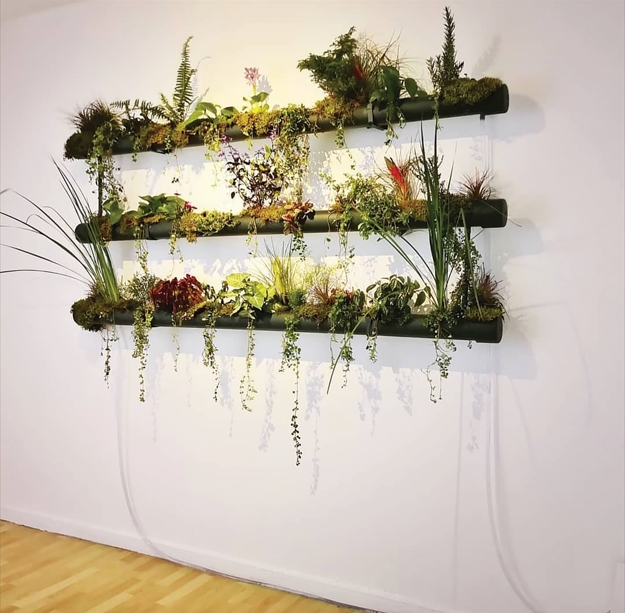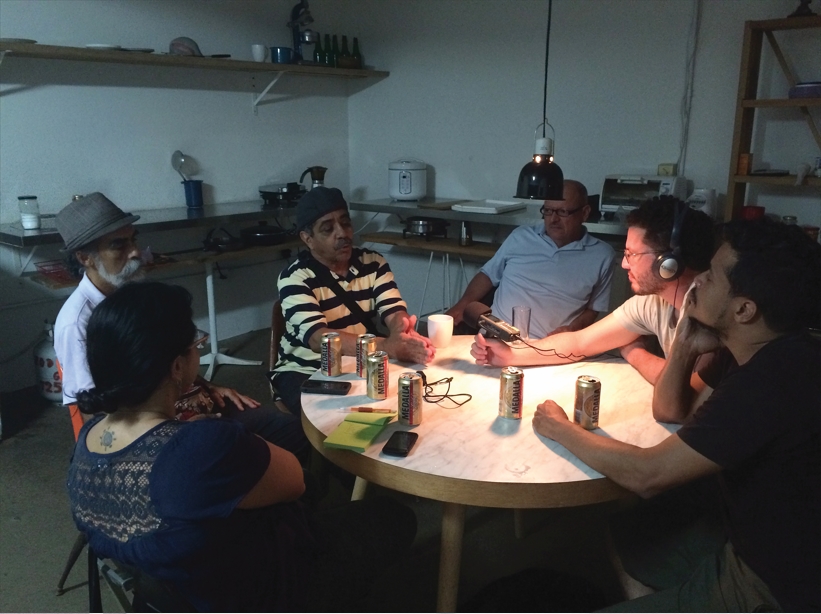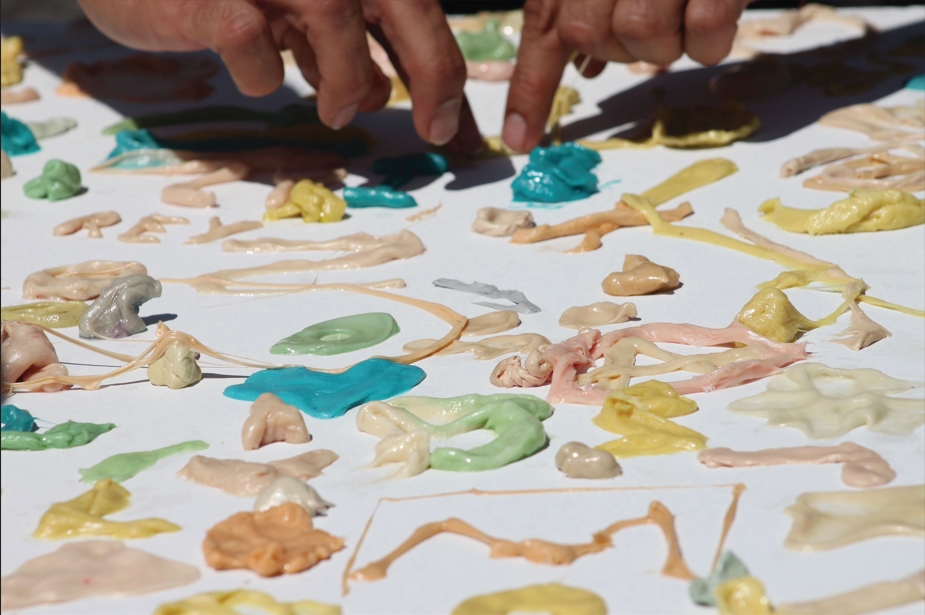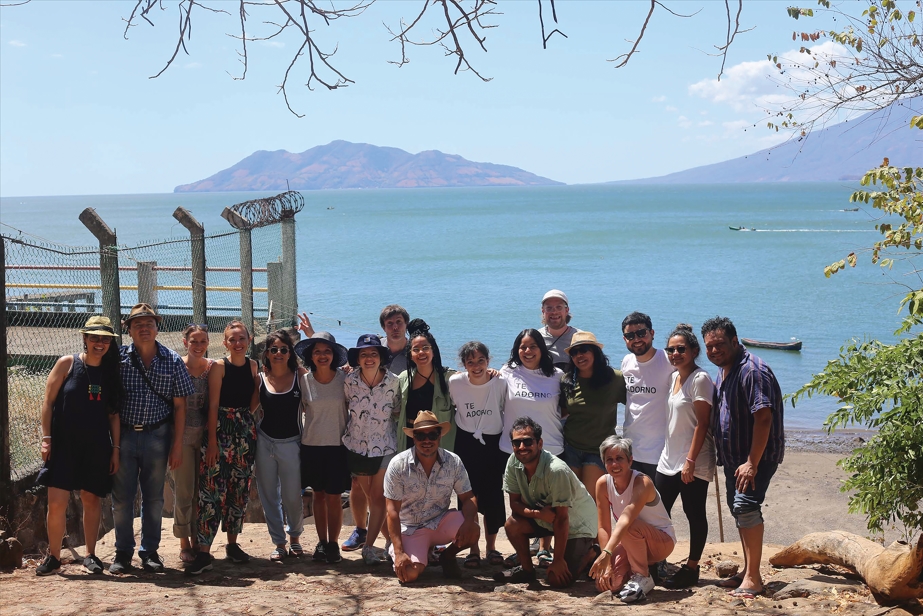
20.12.2021
On the occasion of “Reunión” Performance Festival, which takes place in Honduras every two years in areas protected for their environmental importance, curator Karon Corrales and artist Adán Vallecillo reflect on the possibility of artistic practices as tools for resistance and transformation in the face of the capitalist threat that infringes the territory.
At the beginning of 2019, just a few weeks before the total confinement, we were working together with curators Adán Vallecillo (HN) and Andreas Wagner (CH) in what would practically be the last pre-pandemic activity dedicated to art: the second Reunión performance festival held on the island of “El Tigre”. Many of the activities were developed in part of what were once protected areas for their environmental importance and which will now be expropriated by the Honduran state in complicity with transnational capital, dispossessing those who reside in these areas due to a new law concerning the creation of Employment and Economic Development Zones (or ZEDE law).[1]
Are there universes where we recognize the social injustices and violations to the memory of people in order to take responsibility for them?
These universes are originated in the existence and resistance of those territories defended sometimes to the death of activists and defenders such as Berta Cáceres or Blanca Jeanneth Kawas.
The voices of people and territories that have remained in resistance denounce hundreds of human rights violations as well as violence threaten territorial autonomy and which have been systematically silenced. How does this imposed silence challenge those of us who witness systematic violence from the art system? Do we deserve to know the memories of resistance? and for what purpose?

Karon Corrales (KC): Adán, as you know, Honduras is considered one of the most dangerous countries in the world for those who defend the territory. According to a Global Witness report published in 2017, there is a high probability of being killed for confronting extractive companies. In addition, the number of murders of indigenous leaders is increasing day by day, and it seems these murders will go unpunished despite the efforts of the international community.
Starting from this harsh scenario we are facing and which is part of our reality; do you think that from our role in the art world we are generating enough noise to call attention to this problem? Are these brief attempts or efforts we make to get out of our “comfort zones” enough with what is happening?
Adán Vallecillo (AV): Your question leads me to think about the impact of the 2009 coup on local cultural production; undoubtedly, that was a breaking point in all areas of our lives and many of us reacted immediately; we took to the streets to protest and we were repressed in many ways. This forced us to rethink the role of art in the political struggle. A good part of the artistic community then joined the National Front of Popular Resistance and many became militants in Libertad y Refundación (LIBRE) party. A good part of this sector is outside of what you call “comfort zone”: La Organización Fraternal Negra de Honduras (OFRANEH), la Red Ma(g)dalenas, el Colectivo Las Hormigas, or los Muralistas de Cantarranas; all of them active in feminist and sexual diversity organizations, in mural painting or in popular education. I would say they are outside the radius of the hegemonic art of the called orange economy and nacionalismo de camiseta (T-shirt nationalism) which seek them circumstantially according to their interests.
Despite this, social movements do not need the art world, as they have their own mechanisms of symbolic production originated from indignation and rage in the face of injustice and crushing neoliberal power.

(AV): On the one hand, I think artistic practices with socio-political intentions not reduced to the art world are those small archipelagos you mention. In institutional spaces of the Honduran and Latin American art system, whether museums, biennials or fairs, the archipelagos are harmless because they do not represent any threat to the status quo, on the contrary, they are absorbed for the benefit of the capitalization of the symbolic value of dissidence. However, the encounter of such practices with the public is of the utmost importance and it makes possible reflections out of the institutional control. I believe it is crucial to insist on not understanding institutional spaces as the only possible space for our practices. On the other hand, artists rarely seek recognition within social movements since they know beforehand the political force of such movements will neutralize any aspiration for authorship or prominence. San Isidro movement in Cuba is a paradigmatic case in the region; one of the triggers of the wave of protests in July 2021 resulted in a significant number of people being persecuted, intimidated and imprisoned. Its members are artists who come mostly from the poor and racialized strata of Havana. They have enunciated their demands for justice to the Cuban state in conjunction with international spokespersons such as Coco Fusco. For me, San Isidro and other collectives working against politics of repression, the neoliberal logics of contemporary art or the “orange economy” are examples of the archipelagos of resistance you mention. Sometimes they are in the despised neighborhoods of our cities, like the communities in the interior of Honduras. The community of Trinidad, Santa Barbara, where las Chimeneas Gigantes are held, is an example of the popular expressions in which neighborhood organizations build monumental paper sculptures burned in the public space as rituals of collective catharsis. I am also thinking of Memorias Theater, which operates in Tegucigalpa downtown developing a valuable pedagogical work in theatrical training and presenting experimental proposals of strong political criticism.
I think it would be unfair to overlook the contributions of small communities in the region stimulated around or in dialogue with projects and institutions such as Beta Local in Puerto Rico, Ghetto Biennale in Haiti, TEOR/éTica in Costa Rica, Image Art Factory in Belize, Mujeres en Las Artes in Honduras, Espira/Espora and Artefacto in Nicaragua, or Voces en Acción in Panama and La Bienal en Resistencia in Guatemala, as well as LL Proyectos and Colectivo Tábano in Tegucigalpa, to give just a few examples. Going back to your question I think without a doubt art has been and can continue to be a powerful tool within the movement for change in the power matrices of our societies, however, its imaginative effectiveness will continue to depend on affective networks and knowledge, collective and anonymous, which are antagonistic to the neoliberal logic of the cult of individuality, personal gain and competition.
(KC): As we see it, your practice both as a curator and as an artist is marked, in a way, by community curatorial processes: you are interested in generating an approach to the memory and the territory inhabited by these communities, which we often know very little about. An example of this is Reunión festival. How does it relate to the movements in defense of the territory and the “artistic collectives working against the neoliberal logics of contemporary art and the orange economy”?

(AV): I prefer to approach places and people relevant to me, with a willingness to listen and learn, it’s the only way I know how to do fieldwork without being invasive. The greatest satisfaction comes when you realize how interested the people of the communities in resistance are in your work. They participate and value the artistic experience with true passion. In some way, other traces are woven in the affective memory and which are not reduced to the author’s imprint.
We organize Reunión Performance Festival every two years outside the big cities in Honduras. The first edition took place in a cloud forest (La Tigra National Park, in central Honduras) which was one of the places in the country where the plundering of transnational mining began and today it is undergoing an accelerated process of deforestation. A similar context was evoked for the second edition of the festival, which took place on Amapala and Exposición islands, a marine ecosystem currently threatened by the construction of the much-reviled Development Zones (ZEDES). Based on this background, in both festivals we invited not only international artists, but also local artists, such as Claudia Sevilla, Cesar Manzanares, Miguel Romero and Scarleth Rovelaz, just to mention a few, who developed proposals aimed mainly at recognizing the territory as a common good sustaining our existence.

(KC): It is crucial to continue questioning the binary oppositions between nationalism and internationalism, localism and cosmopolitanism, criollismo and indigenism, or tradition and modernity, which have organized so far many of the proposals in the contemporary art world in order to rethink our relationship with the ecosystem, the land and the territory we inhabit. I wonder then, will art be the way to return to the land?[2] In what way does Reunión honor the bodies-memories-territories?
(AV): I would like to answer this question by taking as a reference the performance of Marilyn Boror Bor, a Mayan Kaqchikel artist from Guatemala, who participated in the second festival we had in Amapala.
The ZEDE Law allows new companies, countries or sources of investment capital to take over many of the protected areas of our country; exercising their own sovereignty as a State through a violation of the principle of non-intervention and the free self-determination of people.
Amy J. Elias & Christian Morarou, The Planetary Turn. Relationality and Geoesthetics in the Twenty-First Century (EE.UU.: Northwestern University Press, 2015)
Comments
There are no coments available.